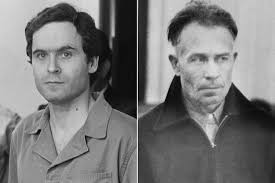Did Ed Gein Help Capture Ted Bundy?

Introduction
The criminal history of the United States is dotted with figures whose actions have left an indelible mark on society. Two names often discussed in this context are Ed Gein and Ted Bundy. While Gein’s gruesome crimes inspired horror fiction and highlighted the darker sides of human psychology, Bundy’s life represented a chillingly calculated serial killer. A question that intrigues many true crime enthusiasts is whether Ed Gein, who was apprehended in the 1950s, played any role in aiding the police in their pursuit of the notoriously elusive Bundy in the 1970s.
Who Were Ed Gein and Ted Bundy?
Ed Gein, often referred to as the ‘Butcher of Plainfield’, was arrested in 1957 and found guilty of the murders of two women. His peculiar behaviour and the macabre nature of his crimes—such as exhuming bodies and crafting trophies from body parts—sparked extensive media attention and moral debates about mental illness. On the other hand, Ted Bundy was one of America’s most infamous serial killers, confessing to the murders of at least 30 young women across several states during the 1970s. His charm and intelligence often helped him evade capture for years.
The Connection Between Gein and Bundy
While Gein and Bundy operated decades apart in different contexts, Gein’s notoriety influenced public perceptions of serial killers. The manner in which the police and media portrayed Gein set a precedent for how society would later respond to Bundy’s horrifying acts. However, there is no direct evidence to suggest that Gein assisted police in apprehending Bundy. Law enforcement officials attributed Bundy’s capture to advancements in criminal profiling and forensic science rather than any historical precedents set by Gein’s case.
Law Enforcement and Profiling Advances
During Bundy’s crime spree, police used evolving techniques such as victimology, behavioural analysis, and forensic science to track and apprehend him. Bundy was finally arrested in 1975, largely through meticulous investigative work and community diligence rather than historical influence from prior criminals like Gein. The modern strategies adopted during Bundy’s case were a significant departure from the policing approaches used during Gein’s time.
Conclusion
The question of whether Ed Gein helped the authorities capture Ted Bundy ultimately highlights the evolution of criminal psychology and law enforcement. While there is no evidence to suggest that Gein played an active role in Bundy’s capture, the changing criminal landscape and the impact of public perception are undeniably shaped by the actions of notorious figures like Gein. As society continues to confront the complex web of crime and punishment, the interplay between historical cases and current methodologies remains a vital area of study for criminologists and historians alike.








